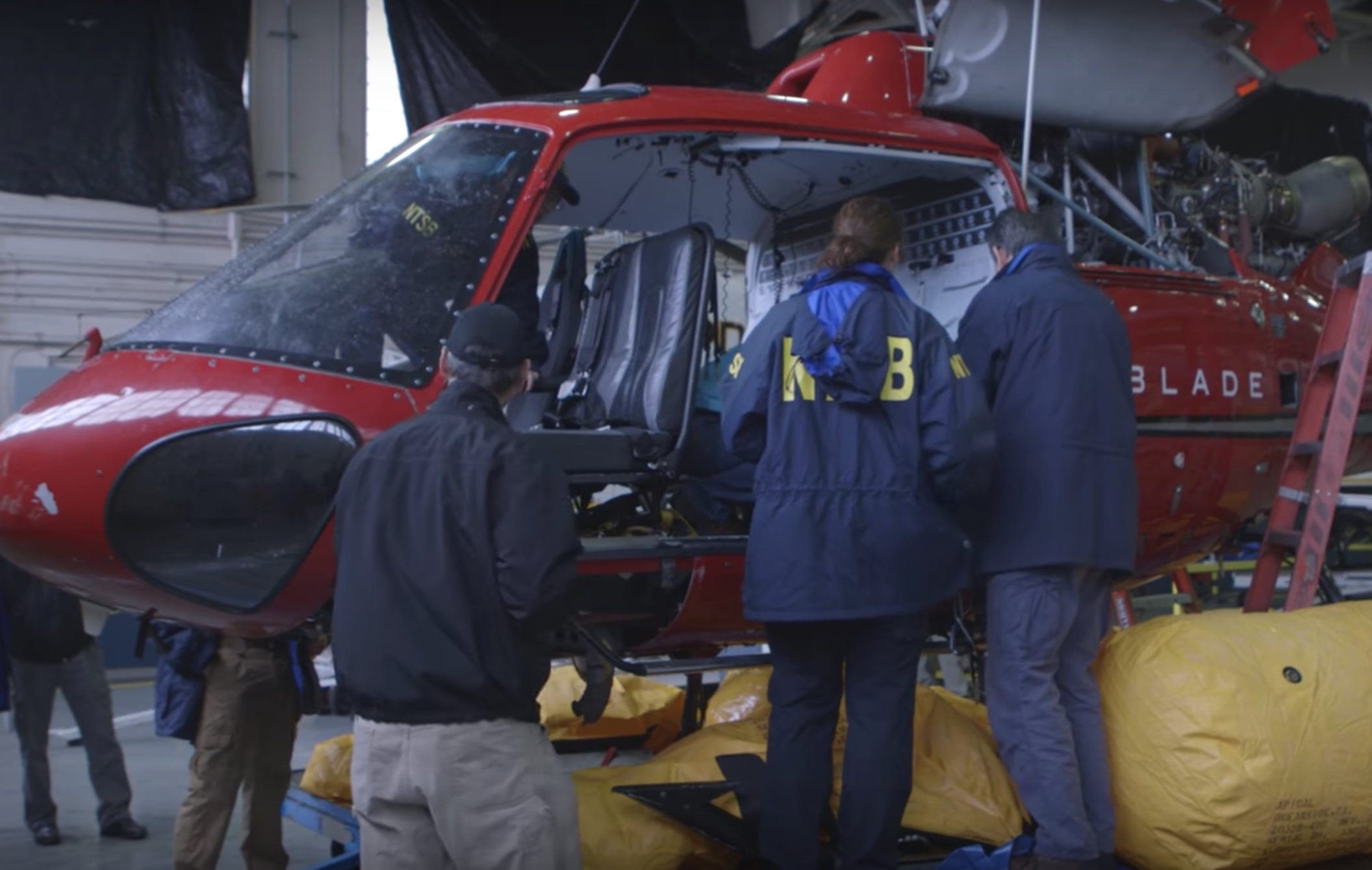Image: NTSB
In a preliminary report released on Monday, the NTSB summarized its investigation so far into the helicopter accident in New York that killed five passengers on a sightseeing flight on March 11. The board says the pilot told them he provided a safety briefing before the flight, and told the passengers where to find the cutting tool on their harnesses, and how to use it. After spending some time taking photos and sightseeing around Manhattan, the pilot described how he initiated “a right pedal turn to begin to head south,” and he heard a low-rotor-RPM alert in his headset, then observed that engine pressure and fuel pressure warning lights were lit. Believing that the engine had failed, he began to look for an emergency landing spot.
The pilot told the NTSB he felt Central Park was too crowded, so he turned back toward the East River and made a distress call to ATC. Once he had established a glide, he tried to restart the engine, but was unsuccessful. He activated the floats at about 800 AGL. At this point, the pilot said he was “committed to impact,” and, when he reached down for the emergency fuel shutoff lever, he realized it was in the off position. He also noted that a portion of the front seat passenger’s tether was underneath the lever. As the helicopter continued to descend, he attempted to restart the engine. As the descent continued through 300 feet, the pilot said he realized the engine “wasn’t spooling up fast enough,” so had to continue the autorotation. The aircraft impacted the water at about 5 to 10 degrees nose-up. The cabin began to quickly fill with water, and then rolled inverted. The pilot said by the time he unbuckled his restraint, he was fully underwater. He was able to grab the door frame and pull himself out, surfacing about four feet away. No analysis is included in thepreliminary report. The full text is posted online.


































